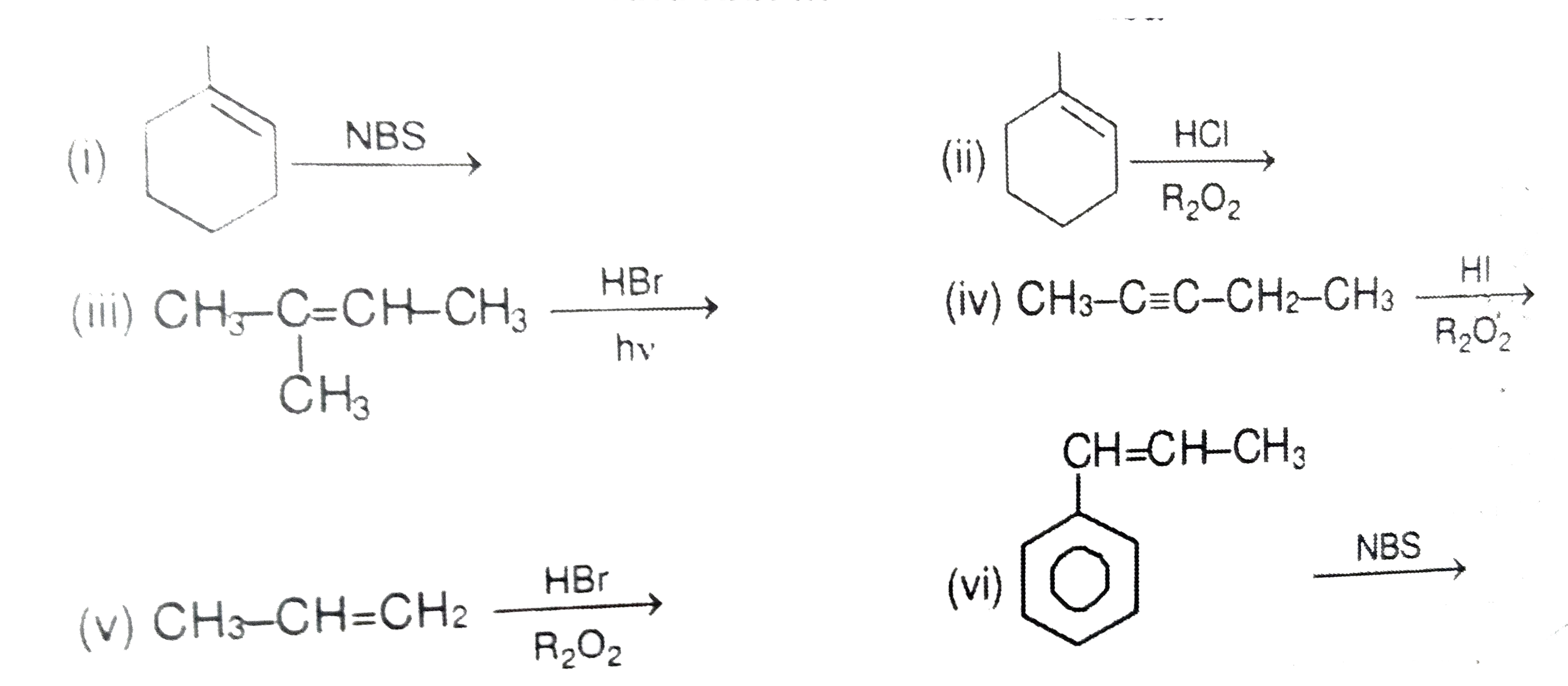STATEMENT-1: Styrene is more reactive than ethylene towards free radical polymerization
and
STATEMENT-2: Polymerization of styrene proceeds through more stable benzyl free radical.
Statement-1 is True, Statement-2 is True, Statement-2 is a correct explanation for Statement-3
Statement-1 is True, Statement-2 is True, Statement-2 is NOT a correct explanation for Statement-3
Statement-1 is True, Statement-2 is False
Statement-1 is False, Statement-2 is True
The correct Answer is:A
Step by step video, text & image solution for STATEMENT-1: Styrene is more reactive than ethylene towards free radical polymerization and STATEMENT-2: Polymerization of styrene proceeds through more stable benzyl free radical. by Chemistry experts to help you in doubts & scoring excellent marks in Class 12 exams.
Updated on:21/07/2023Topper's Solved these Questions
- POLYMERSBook:AAKASH INSTITUTEChapter:POLYMERSExercise:ASSIGNMENT Section-F (Matrix match Type Questions )
Explore 6 Videos
- POLYMERSBook:AAKASH INSTITUTEChapter:POLYMERSExercise:ASSIGNMENT Section-G (Integer Answer Type Questions )
Explore 4 Videos
- POLYMERSBook:AAKASH INSTITUTEChapter:POLYMERSExercise:ASSIGNMENT Section-D (Linked Comprehension Type Questions )
Explore 7 Videos
- ORGANIC CHEMISTRY: SOME BASIC PRINCIPLE AND TECHNIQUESBook:AAKASH INSTITUTEChapter:ORGANIC CHEMISTRY: SOME BASIC PRINCIPLE AND TECHNIQUESExercise:TRY YOURSELF
Explore 28 Videos
- PRINCIPLES OF QUALITATIVE ANALYSISBook:AAKASH INSTITUTEChapter:PRINCIPLES OF QUALITATIVE ANALYSISExercise:Assignment (SECTION H)
Explore 9 Videos
Similar Questions
Knowledge Check
What is true regarding free radical polymerization of ethylene?
APolymerization is invoked by either peroxide initiator or radiationBPolymerization is exothermic in natureCMolecular weight gain occur in propagation step of polymerizationDAll of theseSTATEMENT-1: Phenol is more reactive than benzene towards electrophilic substitution reaction.
and
STATEMENT-2: OH group of phenol is electron donating due to resonance.AStatement-1 is True, Statement-2 is True, Statement-2 is a correct explanation for statement-6BStatement-1 is True, Statement-2 is True, Statement-2 is NOT a correct explanation for Statement-6CStatement-1 is True, Statement-2 is FalseDStatement-1 is False, Statement-2 is TrueSTATEMENT-1: Formaldehyde is more reactive than benzaldehyde for nucleophilic additior reaction.
and
STATEMENT-2: Formaldehyde is more stable than benzaldehyde.AStatement-1 is True, Statement-2 is True, Statement-2 is a correct explanation for Statement-1.BStatement-1 is True, Statement-2 is True, Statement-2 is NOT a correct explanation for Statement-1.CStatement-1 is True, Statement-2 is False.DStatement-1 is False, Statement-2 is True.
Write the name and structure of one of the common initiators used in free radical addition polymersations.
View SolutionWhich of the following polymers is synthesized using a free radical polymerization technique?
View SolutionA : Alkynes is more reactive than alkene towards electrophilic addition reaction.
R : Alkynes form stable carbocation than alkene.
View SolutionStatement-1. Acetylene is more reactive than ethylene towards electrophilic addition reactions
Statement-2. Acetylene contains two π-bonds
View SolutionIn free radical mechanism of polymerization of addition polymer the chain propagation step is
View Solution


